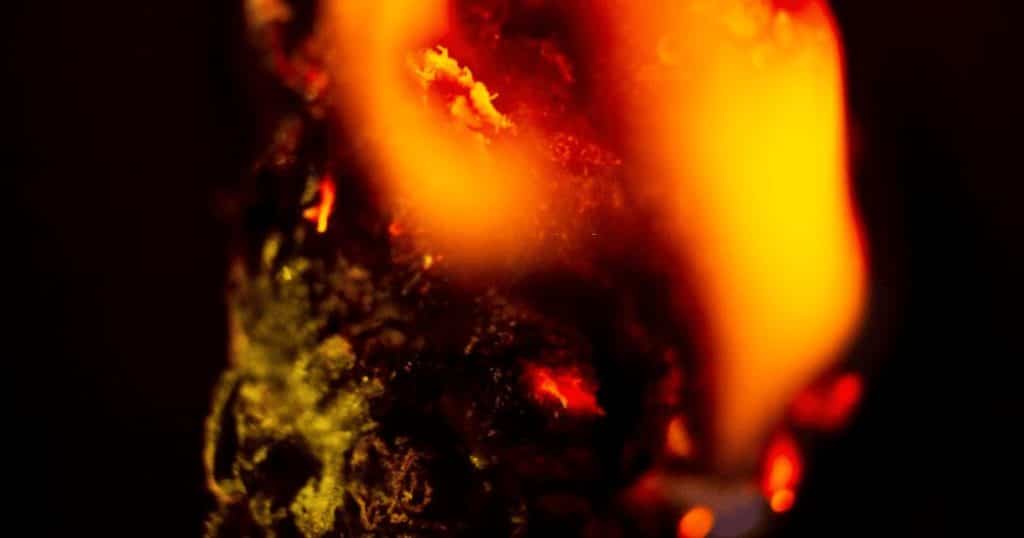History is an interesting thing. We will never learn the true extent of human history, but thanks to researchers and historians the world over, we get closer every day. One thing that has always been a point of debate among historians is the use of cannabis as a psychoactive drug by ancient peoples.
The use of hemp as a fabric is well-documented in ancient times, and, in fact, to date, the oldest documented piece of clothing made from hemp dates back to around 8,000 BC in Turkey. The plant’s earliest use as a drug, however, has been a little harder to pin down.
Until now.
The Jirzankal Cemetery
Despite the fact that for many years now, archaeologists have claimed that the ritual use of cannabis for its psychoactive properties in Ancient China dates back around 5,000 years ago, recent studies have shown that to be untrue.
Thanks largely to the advancement of scientific research and technology, it’s now known that while cannabis was burned for ritual practices in Central Asia five millennia ago, new analyses of those the plant remains in those ritual burnings show that the early cannabis strains used back then had very low levels of THC. This means that even if cannabis was burned for ritual practices, as early as 5,000 years ago, the wild strains that would have been used lacked the psychoactive properties to get those ancient peoples “high.”
However, in 2019, archaeologists excavating at the Jirzankal cemetery – a ritual burial ground believed to belong to the Sogdians who were an ancient civilization found in Western China and Tajikistan – found, at an elevation of 3,000 meters in the Pamir Mountains, something that might finally settle the cannabis history debate.
Buried amongst 34 excavated skeletons – a third of which isotopic analysis confirmed were migrants, lending credence to the belief that they were, in fact, Sogdians, a people well-known for their long-distance trading – were bowls, wooden plates, glass beads from Asia, Chinese harps and silk from China, and braziers that still contained burning material.
When these braziers were ground up and had mass spectrometry and chromatography applied to them to determine what chemical compounds were present in the burning materials, they were found to contain unusually high levels of tetrahydrocannabinol – or THC.
These braziers were more highly concentrated in the tombs of the elite, and, says archaeologists Yang Yimin and Ren Meng from the Chinese Academy of Sciences, they were likely burned in enclosed spaces, allowing mourners to inhale the psychoactive fumes. This makes these findings the earliest provable evidence of the use of cannabis to get high.
Elevated Strains For An Elevated High
In May of 2019, a study on pollen conducted by researchers from the University of Nottingham, the University of Vermont, and Middlebury college found that the cannabis plant split from its ancestor, Humulus lupulus – or common hops – roughly 28 million years ago on the eastern Tibetan Plateau.
These original strains of cannabis, as mentioned earlier, had very low levels of THC. So what, then, made the cannabis found in the burning materials of braziers at the Jirzankal cemetery have abnormally high levels of the psychoactive compound?
Robert Spengler, from the Max Planck Institute for the Science of Human History, says the likely culprit for the evolution of high-THC cannabis in the Pamir Mountains was elevation. The high altitudes at which the plant was grown likely caused stress on the plants, which, in turn, caused them to evolve into plants that were naturally high in the psychoactive compound.
“It is quite likely that people came across cannabis plants at higher elevations that were naturally producing higher THC levels,” Spengler said. Though we went on to say that it’s not beyond the realm of possibilities that these plants weren’t naturally grown, and instead cultivated by the people themselves in order to produce strains higher in THC.
Cannabis For Funerary Ceremonies
Due to the fact that these braziers were found in burial mounds, it’s widely accepted that cannabis was being used by the Sogdians for funerary rituals and ceremonies. And these beliefs are not without merit.
When the Greek historian Herodotus wrote his text entitled The Histories, he notes that other ancient peoples used cannabis – or “hemp seeds,” as he wrote – for funerary ceremonies as well.
In an excerpt in which he discusses the Araxes, a large river in Asia (also called the Aras), he states that the men who inhabit the islands along the Araxes – the Scythians – gather roots from the ground and fruit from trees to eat and store for the winter. He also mentions a tree “which bears the strangest produce.”
“When they are met together in companies they throw some of it upon the fire round which they are sitting, and presently, by the mere smell of the fumes which it gives out in burning, they grow drunk, as the Greeks do with wine. More of the fruit is then thrown on the fire, and, their drunkenness increasing, they often jump up and begin to dance and sing […] Such, then, is the mode in which the kings are buried: as for the people, when anyone dies, his nearest of kin lay him upon a wagon and take him round to all his friends in succession: each receives them in turn and entertains them with a banquet, whereat the dead man is served with a portion of all that is set before the others; this is done for forty days, at the end of which time the burial takes place.”
Herodotus goes on to explain the burial ceremony, which includes the ritual cleansing of the mind and body by the construction of a booth made with three stakes and wrapped in linen, in which a bowl with red-hot stones is placed. Into this bowl, hemp seeds are thrown.
“The Scythians, as I said, take some of this hemp-seed, and, creeping under the felt coverings, throw it upon the red-hot stones; immediately it smokes, and gives out such a vapor as no Grecian vapor-bath can exceed; the Scyths, delighted, shout for joy, and this vapor serves them instead of a water-bath.”
Though ancient people didn’t consume cannabis the way we do today, it’s clear that the history of this incredible plant dates back farther than we could have ever imagined. And it’s likely that we’ll never know the true extent to which ancient civilizations used high-THC cannabis for its specific psychoactive properties. But, as with all things related to history, we will likely continue to learn more as time goes on.
“Enjoyed that first hit? Come chill with us every week at the Friday Sesh for a freshly packed bowl of the week’s best cannabis news!”
















